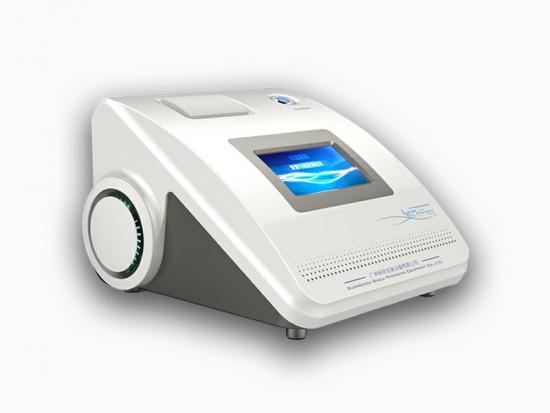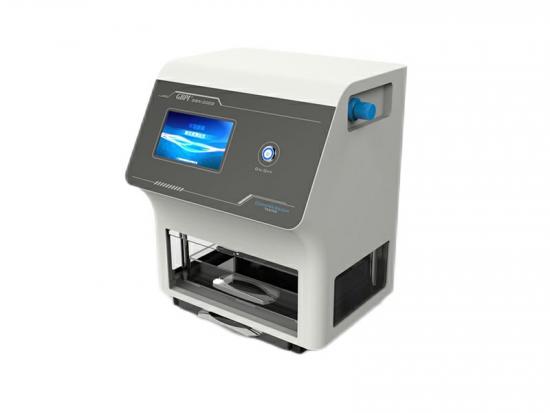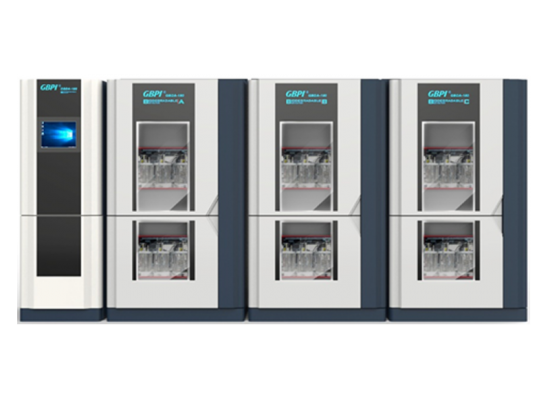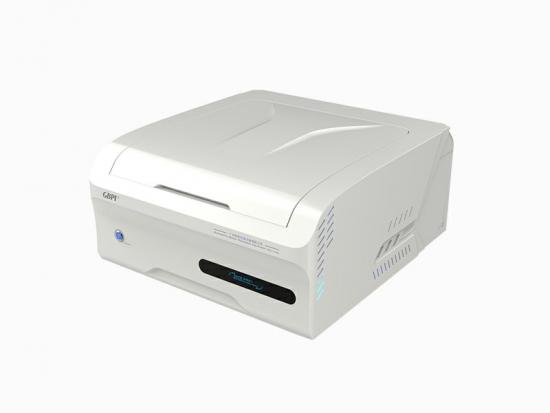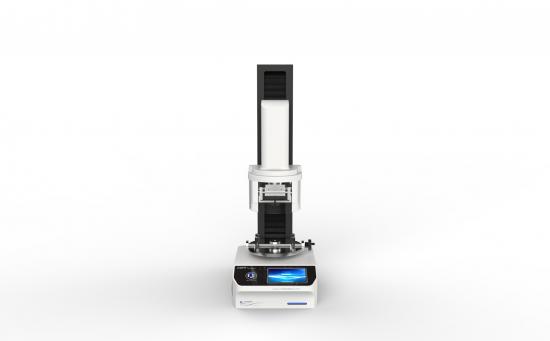I. Overview
A packaging system is the sum of all packaging components that contain and protect a pharmaceutical product, including packaging components that come into direct contact with the drug and secondary packaging components. This technical guide is mainly applicable to the packaging system of chemical injection. The packaging system for injectables should be able to maintain the integrity of the product contents while preventing microbial invasion.

Package integrity, also known as container-closure integrity, refers to the ability of the packaging system to prevent the loss of contents, microbial invasion, and the entry of gases (oxygen, air, water vapor, etc.) or other substances to ensure that the drug continues to meet safety and quality requirements. package integrity test , or container-closure integrity test, CCIT, is a package leak test (including physicochemical or microbiological testing methods) that detects any rupture or seam, some of which can determine the size and/or location of the leak.
This technical guide is drafted with reference to relevant domestic and international technical guidelines and standards, focusing on the selection and validation of sealing inspection methods for injectable packaging systems, with the aim of facilitating the research and evaluation of chemical injectables at this stage.
The drafting of this technical guide is based on the current knowledge of the issue, and will be revised and improved with the continuous improvement of relevant regulations and the improvement of technical requirements of drug research.
II. General considerations
The main types of leaks in injection packaging systems include: 1) microbial intrusion; 2) drug escape or external liquid/solid intrusion; and 3) change in headspace volume content, e.g., headspace inert gas loss, vacuum disruption, and/or external gas entry.
The sealing quality requirements of the injection packaging system can be divided into: 1) the need to maintain sterility and product component content, without maintaining the headspace volume; 2) the need to maintain sterility, product component content and headspace volume; 3) the requirement to maintain sterility of multi-dose packaging, that is, after the package is opened, to prevent microbial invasion and leakage of drugs during use. Research related to the sealing of the injection packaging system should be carried out according to the product characteristics.
Injectable packaging system sealability meets the requirements, which usually means that the packaging system has passed or can pass the microbial challenge test. A broad sense means that there are no leaks that would affect the quality of the drug product. Based on scientific studies and risk assessment, the maximum allowable leakage limits should be determined taking into account the packaging composition and assembly, the product contents, and the environment to which the product may be exposed during its life cycle. A packaging system is considered to be well sealed if its leakage does not exceed its maximum allowable (Maximum allowable leakage limit, MALL).
Packaging system sealing research begins at the product development stage and continues throughout the product life cycle. (1) in the early stage of product development should be packaging sealing system design selection and quality control, including packaging component system sources, physical indicators, component size, matching, etc.; (2) product process development, pay attention to the key process steps and key process parameters related to the sealability of research and control; (3) the development and validation of sealing inspection methods, pay attention to method selection and sensitivity, the method needs to be (4) the stability of the early and late outside the other points in time can be used packaging system sealing test as an alternative to aseptic inspection; (5) the establishment of packaging system sealing inspection and control measures in commercial production, pay attention to the collection and accumulation of leakage and sealing test data, useful for the detection and avoidance of operational deviations that damage packaging sealing; (6) post-marketing changes to the drug may affect the packaging sealing (6) post-marketing changes to the drug may affect the packaging seal, should consider its packaging system sealing re-evaluation and re-verification.
Ⅲ. the packaging system sealing research verification and life cycle management
1、Design selection of packaging sealing system
The design selection of product packaging should be based on the quality requirements of the injectable (such as the sterility of the product and the maintenance of the headspace), taking into account the product contents, production process, stability requirements, storage and distribution environment, and the final use of the product. Determine the packaging form, select packaging components, and establish strict control standards for physical indicators, component dimensions and deviations, matching requirements, etc.
2、Product process development and validation
The product process development phase needs to focus on the key factors affecting the packaging sealability, such as key steps, process conditions, production lines and historical experience of this packaging system.
The sealability of the injection packaging system should be validated. To provide evidence of seal integrity under the most stringent conditions, validation samples are usually produced to simulate the worst conditions of the process. Testing samples should include samples produced under simulated worst-case process conditions and also consider the impact of product storage, transportation, use, etc. on the packaging system's tightness. The purpose of packaging development and subsequent validation is to ensure the use of reliable processes, under the specified operating parameters, the continued production of reliable quality, packaging to meet the requirements of the product.
3, the choice of packaging sealing inspection methods
Package sealing inspection should take into account the type of packaging, the expected control requirements, according to the characteristics of the drug itself, the production process and different stages of the drug life cycle, combined with the sensitivity and applicability of the inspection method, based on risk assessment, the choice of appropriate sealing inspection methods.
Sealing inspection methods are divided into two categories: deterministic methods and probabilistic methods.
The following table lists the common sealing inspection methods for reference.
|
Category |
Testing Method |
GeneralApplication |
Literature coverage detection limit levelaa |
Quantitative/Qualitative |
|
Probabilistic Approach |
Microbial challenge method (immersion or aerosol method)
|
Packages must be able to withstand submerged conditions, may require tools to limit expansion or movement of the soft pack, and may be used for media filling; commonly used for package seal verification. |
Level 4 |
Qualitative |
|
Color water method |
Must be able to withstand submersion and may require tools to limit expansion or movement of the soft pack. Primarily suitable for liquid formulations. |
Level 4 |
Qualitative or quantitative |
|
|
Air bubble release method |
Packages with headspace, must be able to withstand submersion, small volume, less than a few liters |
Level 4 |
Qualitative |
|
|
Deterministic approach |
High voltage discharge method |
The product has a certain conductivity, while the packaging components are relatively non-conductive, and the product is not flammable
|
Level 3 |
Quantitative |
|
Laser headspace Analysis method |
Transparent packaging: products requiring low oxygen or carbon dioxide headspace content; products requiring low water vapor content; products with low internal packaging pressure |
Level 1 |
Quantitative |
|
|
Mass extraction method |
Packages with top air or filled with liquid |
Level3 |
Quantitative |
|
|
Pressure decay method |
With top air packaging |
Level3 |
Quantitative |
|
|
Vacuum decay method |
Packages with top air or filled with liquid |
Level 3 |
Quantitative |
a Reference to the relevant domestic and international guidelines give the data of gas leakage rate and the corresponding leakage aperture size, the correspondence is roughly equivalent in theory, rather than absolute. The specific values will vary with product packaging, testing instruments, testing method parameters and test sample preparation.
Relationship between gas leak rate and leak aperture size
|
Literature report detection limit level |
Gas leakage rate(std·cm3/s) |
Leakage orifice size(μm) |
|
Level 1 |
<1.4 × 10-6 |
< 0.1 |
|
Level2 |
1.4 × 10-6 ~ 1.4 × 10-4 |
0.1 ~ 1.0 |
|
Level3 |
>1.4 × 10-4 ~ 3.6 × 10-3 |
> 1.0 ~ 5.0 |
|
Level4 |
>3.6 × 10-3 ~ 1.4 × 10-2 |
> 5.0 ~ 10.0 |
|
Level5 |
>1.4 × 10-2 ~ 0.36 |
> 10.0 ~ 50.0 |
|
Level6 |
> 0.36 |
> 50.0 |
Sealing inspection methods preferably can detect the maximum allowable leakage limit of the product deterministic method, and the sensitivity of the method, etc. to verify. If the sensitivity of the method cannot reach the level of the maximum allowable leakage limit of the product or the maximum allowable leakage limit of the product is not clear, it is recommended that at least two methods (one of which is recommended for the microbial challenge method) be used for the sealability study, and a comparative study of the sensitivity of the two methods should be conducted. The microbial challenge method needs to be established with attention to the type of microorganism, concentration of the bacterial solution, type of medium and exposure time。
4、Package sealability inspection method validation
Sealing inspection methods require appropriate methodological validation. Focus on the examination of method sensitivity, sensitivity refers to the method can reliably detect the minimum leak rate or leak size, the purpose is to find out the relationship between microbial invasion or other leakage risks and leak pore type / size, and thus clarify the detection ability of the detection method. Method sensitivity is confirmed by challenging repeated testing of packages with and without leakage defects.
Method validation requires the establishment of negative and positive control samples. Negative controls are packaging containers without known leakage pores, while positive controls are packaging containers with known leakage pores created by laser perforation, microtubule/capillary piercing, etc. Probabilistic detection methods (such as microbial challenge method, color water method, etc.) validation, the use of multiple positive control samples with different pore sizes is particularly important to clarify the relationship between the probability of detection and the leak pore size. Negative and positive controls can be assembled in a manner typical of the product to be tested using normally process-treated components.
Batches and quantities of packaging samples used for validation are primarily based on the complexity of the packaged product, the quality requirements of the product and the manufacturer's prior experience, and are developed based on the results of the risk assessment.
5. Sealing requirements for stability studies
Sterility checks are conducted at the beginning and end of the stability study for injectables, and packaging system sealability checks may be used instead at other points in time. The sealing inspection method used should be methodologically validated.
The proposed production phase of sealing inspection should be used to verify the test method.
Ensuring the sealing of packaging systems depends mainly on good product design (packaging selection) and control of the product production process, rather than relying solely on online performance testing or final product inspection, because not all packaging system sealing defects can be easily detected.
Based on risk assessment, as well as packaging sealability data accumulated during the product development, validation, and production phases, commercial production sealability checks are conducted. Melt-sealed products (such as glass or plastic ampoules) should be tested for 100% sealability, and the sealability of other packaging containers should be sampled according to operating procedures. For high-risk products such as large-capacity soft pouch packaging, it is recommended that a certain amount of samples be added to the process validation of the sealability inspection to confirm the feasibility of the proposed packaging materials and production processes; the scientific development of sampling plans in commercial production to increase the number and frequency of samples; and the conditions for 100% sealability inspection.
7, post-marketing changes to the drug study
When the packaging design, packaging materials and / or production process conditions and other changes may affect the packaging seal, the product packaging system should be considered for re-evaluation and re-validation of sealing.
IV. Accessories
Maximum allowable leakage limit
Maximum allowable leakage limit, MALL is the maximum allowable leakage rate or leakage size of the product, that is, under this leakage rate or leakage size, there is no risk of leakage affecting the safety and quality of the product, which can ensure that the product meets the corresponding physical, chemical and microbiological quality requirements during the shelf life and use.
Determining the maximum allowable leakage limit for a packaging system is usually based on science and risk, and should take into account the packaging composition and assembly, the product contents, and the environment to which the product may be exposed during its life cycle. Some studies have shown that rigid packaging with pores of approximately 0.1 μm diameter has little risk of liquid leakage, while pores of approximately 0.3 μm diameter present a risk of microbial intrusion. For rigid packaging that does not require the maintenance of headspace, a maximum allowable leak limit of 6 × 10-6 mbar-L/s can be used, corresponding to pores with diameters between 0.1 and 0.3 μm. Choosing this conservative maximum allowable leak limit ensures a lower risk of microbial intrusion or liquid leakage, and additional microbial or liquid intrusion challenge studies to characterize the size of the vulnerability may not be performed.More product technology research at GBPI Testing Instruments.
V. REFERENCES
1. State Drug Administration Drug Review Center. Technical Requirements for Consistent Evaluation of the Quality and Efficacy of Generic Chemical Injectables (No. 2, 2020)
2. Good Manufacturing Practice for Pharmaceuticals (revised in 2010) (Ministry of Health Order No. 79)
3. "Drug GMP Guide for Sterile Drugs" China Pharmaceutical Science and Technology Press, 2011.
4. Pharmaceutical Manufacturing Validation Guide, Chemical Industry Press, 2003.
5. USP <1207> Package integrity evaluation-sterile products.
6. USP <1207.1> Package integrity testing in the product life-cycle-test method selection and validation. 7.
7. USP <1207.2> Package Integrity Leak Test Technologies. 8.
8. USP <1207.3> Package Seal Quality Test Technologies. 9.
PDA Journal of Pharmaceutical Science and Technology,
Technical Report No. 27. pharmaceutical package integrity. 1998. 10.
FDA. Guidance for Industry: Container and Closure System
Integrity Testing in Lieu of Sterility Testing as a Component of the Stability Protocol for Sterile Products.
FDA. Guidance for Industry: Container and Closure System Integrity Testing in Lieu of Sterility Testing as a Component of the Stability Protocol for Sterile Products. 2008.
Guazzo DM, Singer DC, Stevens-Riley M, et al. Proposed revisions to general chapter sterile product packaging-integrity evaluation < 1207>. Stimuli to the revision process. Pharmacopeial Forum. 2014, 40(5). 12.
FDA. Guidance for Industry - Container Closure Systems for Packaging Human Drugs and Biologics (Chemistry, Manufacturing, and Controls Documentation). 1999.

 info@gbtest.cn
info@gbtest.cn



 en
en ru
ru es
es ar
ar

